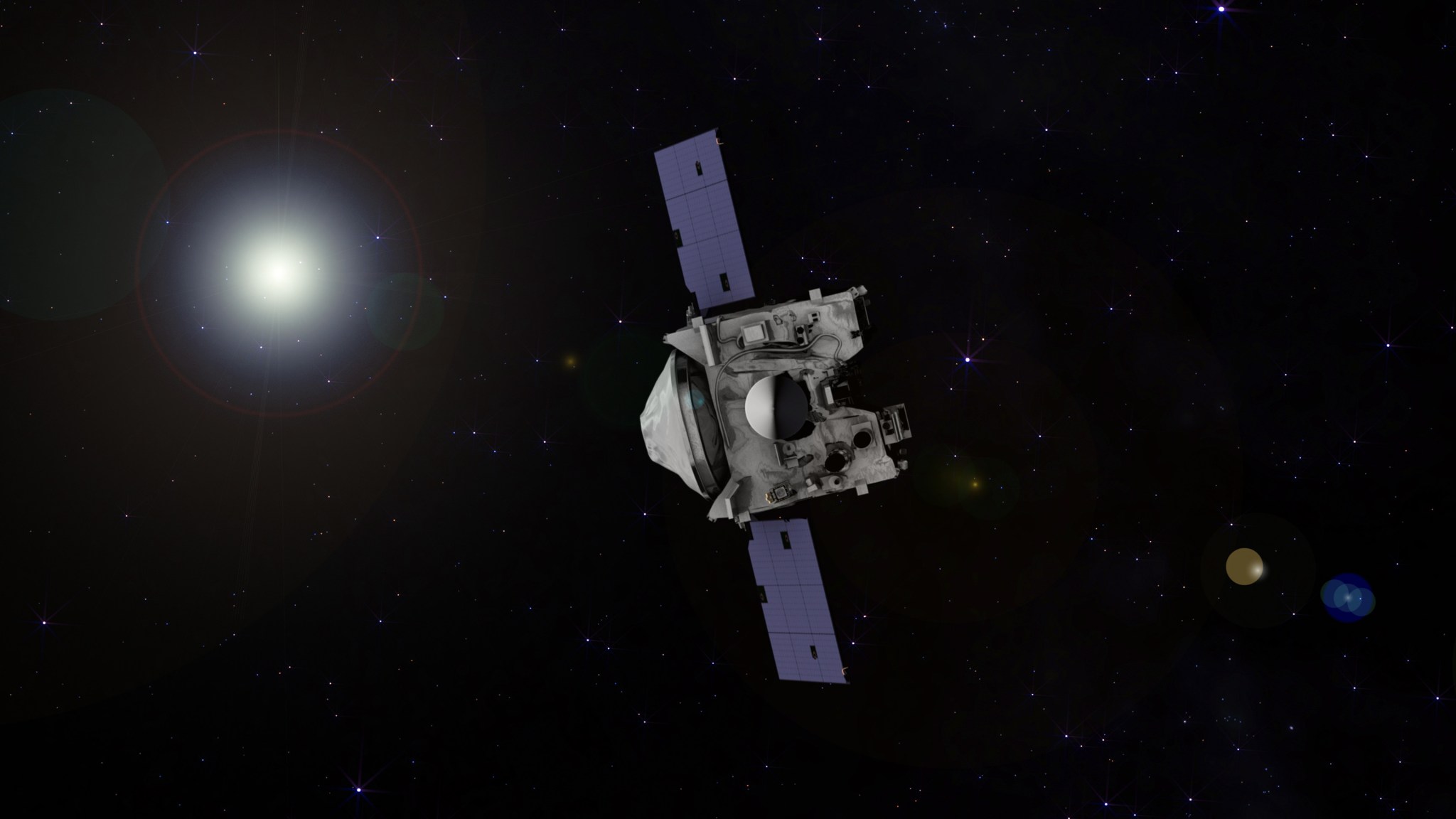Editor’s note (Jan. 9, 2018): The OSIRIS-REx spacecraft’s arrival date at Bennu has been revised to December 2018, with approach operations starting in August.
NASA has selected 13 participating scientists for the agency’s first asteroid sample return mission, OSIRIS-REx (Origins, Spectral Interpretation, Resource Identification, and Security – Regolith Explorer).
The goal of the OSIRIS-REx Participating Scientist Program is to enhance the scientific return during the asteroid-operational phase of the mission by expanding participation in the mission through new investigations that broaden and/or complement existing investigations. The participating scientists will become science team members during their three-year tenure with the mission.
OSIRIS-REx launched Sept. 8, 2016, from Cape Canaveral, Florida. It’s currently on a seven-year journey to rendezvous with, study, and return a sample of Bennu to Earth. This sample of a primitive asteroid will help scientists understand the formation of our solar system more than 4.5 billion years ago.
The spacecraft will arrive at Bennu in August 2018, and begin surveying the surface.
The newly selected participating scientists are:
- Joshua Bandfield – Space Science Institute, Boulder, Colorado
- Kerri Donaldson-Hanna – University of Oxford, England
- Catherine Elder – Jet Propulsion Laboratory, Pasadena, California
- Timothy Glotch – Stony Brook University (SUNY), New York
- Romy Hanna – University of Texas, Austin
- Christine Hartzell – University of Maryland, College Park
- Jamie Molaro – Planetary Science Institute, Tucson, Arizona
- Greg Neumann – NASA’s Goddard Space Flight Center, Greenbelt, Maryland
- Maurizio Pajola – INAF/Astronomical Observatory of Padua, Italy
- Stephen Schwartz – University of Arizona, Tucson
- Matthew Siegler – Planetary Science Institute, Tucson, Arizona
- David Trang – University of Hawaii, Manoa
- Pasquale Tricarico – Planetary Science Institute, Tucson, Arizona
NASA’s Goddard Space Flight Center in Greenbelt, Maryland, provides overall mission management, systems engineering and the safety and mission assurance for OSIRIS-REx. Dante Lauretta of the University of Arizona, Tucson, is the principal investigator, and the University of Arizona also leads the science team and the mission’s science observation planning and data processing. Lockheed Martin Space Systems in Denver built the spacecraft and is providing flight operations. Goddard and KinetX Aerospace are responsible for navigating the OSIRIS-REx spacecraft. OSIRIS-REx is the third mission in NASA’s New Frontiers Program. NASA’s Marshall Space Flight Center in Huntsville, Alabama, manages the agency’s New Frontiers Program for the Science Mission Directorate in Washington.
Nancy Neal Jones
NASA’s Goddard Space Flight Center, Greenbelt, Maryland




























